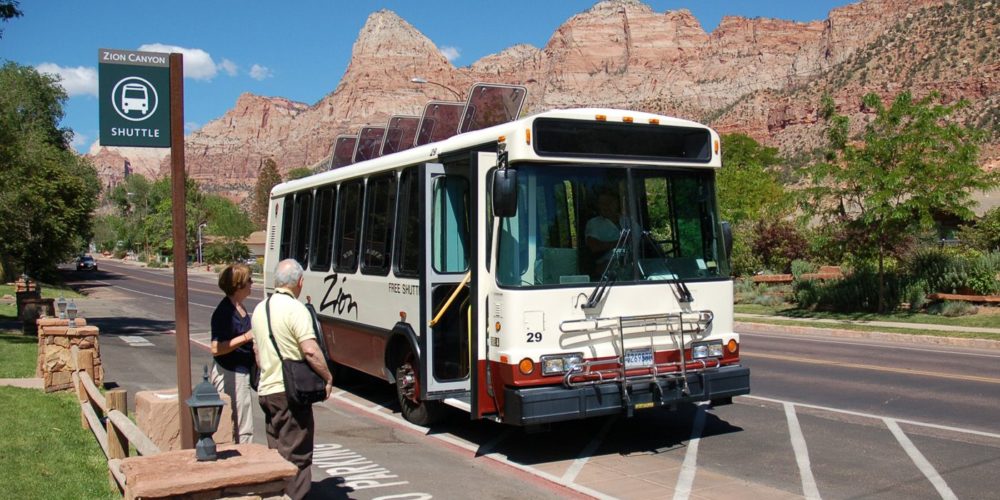On August 25, 2016, the National Park Service (NPS) will celebrate its 100th anniversary. As part of the National Park Service Centennial commitment, the NPS created a five year plan for 2015-2020, with three overarching strategic goals for addressing accessibility:
- Create a welcoming environment by increasing the ability of the National Park Service to serve visitors and staff with disabilities.
- Ensure that new facilities and programs are inclusive and accessible to people with disabilities.
- Upgrade existing facilities, programs, and services to be accessible to people with disabilities.
“It cannot be emphasized enough that while the National Park Service can and must learn from past practices, now is the time to invest in, test, and refine new approaches and technologies to provide universal accessibility while adhering to existing laws and regulations.”
All In! Accessibility in the National Park Service Five-Year Plan
An important part of park system accessibility is transportation access to and within the parks. When transportation is offered within a park, the NPS is committed to being able to provide accessible transportation. A director’s order in 2000 stated that there will be fully accessible vehicles providing effective services to persons with disabilities. If the system is not accessible, there will be a separate accessible vehicle or personal vehicles will be allowed. NPS has a service called Alternative Transportation Systems (ATS). This service helps park units minimize resource impacts where traffic volume on existing roadway infrastructure has reached or is over capacity and helps preserve resources (e.g., improvements to air quality). Currently, there are 121 alternative transportation systems in 63 parks nationwide, including shuttles, buses, vans, trams, boats, ferries, trains, and trolleys.
- In Zion National Park and Grand Canyon National Park, for example, buses and shuttles are used.
- Popular parks with trains are Cuyahoga Valley Scenic Railroad and Steamtown National historic site.
Alternative Transportation Systems (ATS) can increase access to and accessibility of America’s national parks for older adults and people with disabilities. ATS helps to ensure that the benefits of visiting national parks, which have been shown to help people improve their mood, reduce their stress levels and enhance wellness, are available to all. For example, Yosemite includes 1,200 square miles of mountainous terrain, but through its free shuttle system, visitors—including travelers with disabilities—can explore Yosemite Valley sites. All buses at Yosemite are accessible with wheelchair lifts and tie‐downs. At Harpers Ferry National Historical Park, a park of just 6.25 square miles, a 2004 Traffic and Parking Management Survey recommended redesigning the parking lot and encouraging public transportation and shuttle use, making it accessible to those who may not be able to or choose not to drive to the site.
As an additional resource for visitors, the national parks also offer an access pass to people with disabilities and older adults. This is a free, lifetime pass available to permanent residents of the United States, providing access to more than 2,000 recreation sites and a discount on Expanded Amenity Fees (e.g., camping, swimming, boat-launching, and guided tours).
August 25th is fast approaching. To find a park near you or to explore information on all the national parks and monuments check the Find Your Park website and see what interests you!
Here are some helpful resources if you are planning on visiting a park:
- National Park Service
- NPS accessibility page
- Disabled Traveler’s Companion works with the NPS to publish accessible information. The goal is to remove fears and concerns of visitors with a disability.
- Federal Lands Transportation Institute provides an archive of design guidelines, manuals, training, conference presentations & other useful links.

You suggested that Alternative Transportation Systems (ATS) can increase access to and accessibility of America’s national parks for older adults and people with disabilities. My mother wants to come with us on our road trip to a couple of the national parks but has a hard time getting around. I wonder how many of the lodging facilities have this type of transportation. http://www.desertpearl.com/en/story/history